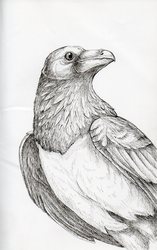Sign In
CloseTotem of the day is Crab! Pay attention to sights and insights that may come to your mind in the coming future. These stronger waves of clairvoyance will remind you to take stock of the messages coming from other realms. There may be an unintended shift in yourself or your environment that will help to positively align your life. Don't let yourself become too focused on the immediate, but remember to pay attention to those visions, dreams, and intuitive signs in your environment. Give yourself time to be silly or dance by yourself. The Crab totem is known for it's connection with protection, sensitivity, emotions, and the changing cycles of life. Due to their lifestyle living on land and in water, they are connect strongly with the water element. This aspect further connects the crab with the moon. The crab reminds us that reaching our goals is not always a straight line, but that we may need to take side paths to reach it. It takes observation and the ability to take in your entire surrounding in order to figure out which path to take. It is OK to be curious, to explore. Crab is the fourth sign of the zodiac which connects to taking pleasure in the comforts of home and stability. People who connect with Crab are adaptable, flexible types who surprise others with their ability to make snap decisions and quick changes. These individuals are able to focus on multiple things at once while, at the same time, being able to shift focus quickly. Durable and able to adapt to any change, Crab types are also extremely sensitive with acute hearing and senses that sometimes are too overwhelming. They will sometimes withdraw or become reclusive if over stimulated and are fiercely protective of their personal space and home.
Crab, Brachyura, are omnivorous crustaceans that are related to shrimp, lobsters, and prawn. They can be found all over the world in water-based environments. Most species can be found in shallow waters where they prefer rocky pools or coral reefs. There are also species of freshwater crab that are known to live in lakes and rivers. There are over 6,000 species of crab which are split into 93 crab groups. They can be as small as the Pea crab, the smallest species which only grows to half an inch across, or as large as the Japanese Spider Crab which lives in the deep waters around Japan and has the largest leg span of any arthropod at 18 feet from claw to claw. These massive crabs can grow to 16 inches across and weigh up to 42 lbs. Although most crabs grow to an average size of 1 foot across. Crabs are covered in a thick exoskeleton that creates their hard, protective shell and is comprised of Chitin which is comparable to keratin. Two large claws aid in hunting and protection. Males generally have one claw that is much larger than the others which aids in communication and attracting mates. Female crabs also have a broader and rounded abdomen compared to males. Crabs are known for their sideways form of walking which is due to the way their legs have evolved. While some crabs can walk forwards or backwards, running sideways is most efficient. Some species are able to swim quite well and are classified into the family called Portunidae. These types of crabs have a pair of legs which have evolved flatter in order to help paddle the water. These social creatures communicate mainly by the drumming or waving of their claws. They can be seen fighting over caves, crevices, or mates at times. Some crabs such as the Ghost crab or the Fiddler crab will dig burrows in the sand or mud. The diet of a crab consists of mainly algae, although they will also eat a range of foods including worms, fungi, molluscs, and other crustaceans. Certain species will have more specific diets such as eating plankton, shellfish, or fish. Although males are often aggressive towards one another, crabs are also known to work together in order to protect and feed their families. Male crabs will attract a female through a mixture of pheromones, claw waving, and acoustic means. Fiddler crabs will resort to waving claws while more aquatic species will focus on using pheromones. The broader shape of females aids in their ability to brood their eggs on this wide abdomen with a sticky material securing them in place. After hatching, the larvae are released by the female into water. Species of Crab larvae go through a variety of number of molts before they reach the megalopa stage which is an immature form that resembles the adult crab except for a tail. Juveniles will go through a series of molts before they fully mature. Some crab species are known to migrate down to the ocean in order to reproduce.
Submission Information
- Views:
- 418
- Comments:
- 0
- Favorites:
- 0
- Rating:
- General
- Category:
- Visual / Traditional




